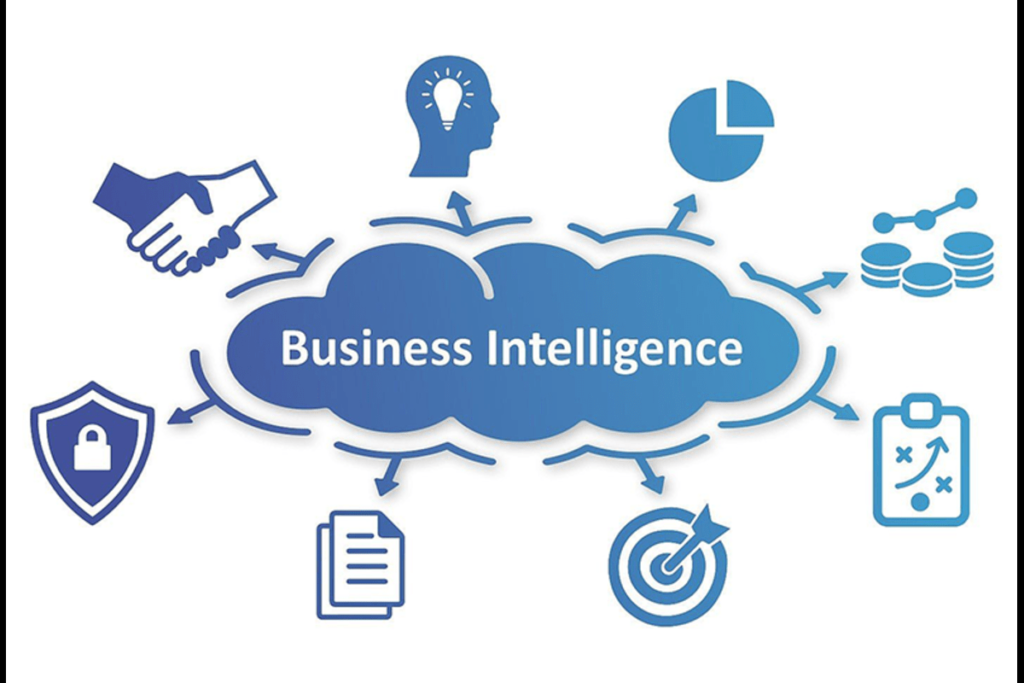Demystifying Business Intelligence: What Every Business Owner Needs to Know

Introduction to Business Intelligence
Are you ready to unlock the power of data and take your business to new heights? Business Intelligence is the key that can help you make informed decisions, drive growth, and stay ahead of the competition. Let’s dive into the world of Business Intelligence and discover how it can revolutionize the way you do business.
Benefits of Implementing Business Intelligence
Business Intelligence (BI) offers a plethora of benefits for businesses looking to thrive in today’s data-driven world. By implementing BI tools, companies can gain valuable insights into their operations, customer behavior, and market trends. This enhanced visibility allows decision-makers to make informed choices that drive growth and increase profitability.
One significant advantage of BI is the ability to streamline processes and improve efficiency across all departments. With real-time access to key performance indicators and analytics, organizations can identify bottlenecks, optimize workflows, and allocate resources effectively.
Moreover, BI empowers businesses to stay competitive by identifying emerging trends early on. By analyzing historical data and predicting future outcomes, companies can adapt their strategies proactively rather than reactively.
Leveraging Business Intelligence enables organizations to make smarter decisions based on data-driven insights rather than relying solely on intuition or guesswork.
Different Types of Business Intelligence Tools
When it comes to business intelligence tools, there is a wide array of options available to cater to various needs and preferences. One common type is dashboards, which provide a visual representation of key metrics and data points in real-time. These dashboards offer a quick snapshot of the overall health of your business.
Another popular tool is data mining software, which helps in uncovering patterns and insights from vast amounts of data. This can be particularly useful for predicting future trends or understanding customer behavior.
On the other hand, reporting tools allow users to generate customizable reports based on specific parameters. These reports can help in monitoring performance and making informed decisions based on accurate data analysis.
Furthermore, self-service BI tools empower non-technical users to create their own reports and analyses without relying on IT departments. This promotes agility and independence within organizations when it comes to extracting insights from data effectively.
How to Choose the Right BI Tool for Your Business
When it comes to choosing the right Business Intelligence (BI) tool for your business, it’s essential to consider your specific needs and goals. Start by evaluating the size of your organization and the complexity of data you handle. A scalable BI tool can grow with your business.
Next, assess the technical expertise of your team. Some BI tools require advanced knowledge, while others offer user-friendly interfaces for easy adoption. Consider compatibility with existing systems to ensure seamless integration and efficient workflows.
Think about the type of insights you need. Whether it’s real-time analytics, predictive modeling, or data visualization, prioritize features that align with your strategic objectives. Additionally, factor in budget constraints and ROI potential when selecting a BI tool that offers value for money.
Don’t forget about customer support and training options provided by BI vendors. Good support can make a significant difference in maximizing the benefits of your chosen BI tool over time.
Best Practices for Utilizing Business Intelligence
When it comes to utilizing Business Intelligence effectively, there are some best practices that can help business owners make the most out of their data.
It is crucial to define clear objectives and goals for using BI within your organization. Understanding what you want to achieve will guide you in selecting the right metrics and KPIs to focus on.
Ensure that your data is accurate and up-to-date. Cleaning and maintaining high-quality data is essential for making informed decisions based on reliable information.
Involve key stakeholders from different departments in the BI process. Collaboration between teams can provide valuable insights and a holistic view of the business operations.
Invest in training for employees to enhance their understanding of BI tools and analytics. Empowering staff with the knowledge they need will drive better utilization of Business Intelligence across all levels of the organization.
Common Challenges and How to Overcome Them
Navigating through the world of business intelligence can come with its set of challenges. One common hurdle is data quality issues, where inaccurate or incomplete information can lead to incorrect insights. Overcoming this challenge requires implementing data cleansing processes and ensuring data accuracy from the source.
Another obstacle businesses may face is poor user adoption rates. Sometimes, employees are resistant to change or overwhelmed by complex BI tools. To address this, providing adequate training and support for users is essential in maximizing the benefits of business intelligence solutions.
Integration challenges also arise when attempting to connect different systems and sources of data within an organization. This can be overcome by investing in flexible BI tools that offer seamless integration capabilities across various platforms.
Furthermore, scalability issues may emerge as businesses grow and need to handle larger volumes of data. Choosing a scalable BI solution from the outset can prevent roadblocks down the line and ensure smooth operations as your business expands into new territories or markets.

Future Trends in Business Intelligence
As technology continues to advance at a rapid pace, the future of business intelligence looks promising. One key trend that is gaining momentum is the integration of AI and machine learning algorithms into BI tools. These technologies will enable businesses to analyze data more efficiently and uncover valuable insights in real-time.
Another emerging trend is the emphasis on data storytelling. Instead of just presenting raw data, BI tools are evolving to help users create compelling narratives using visualizations and interactive dashboards. This shift towards storytelling will make it easier for stakeholders to understand complex data patterns and make informed decisions.
Furthermore, we can expect an increased focus on self-service BI tools that empower non-technical users to access and analyze data independently. This democratization of data will enable organizations to foster a culture of data-driven decision-making across all levels.
The future of business intelligence is bright, with continued innovations driving greater accessibility, efficiency, and effectiveness in leveraging data for strategic advantage.
Conclusion
In the rapidly evolving business landscape, Business Intelligence has become a crucial tool for organizations to stay competitive and make informed decisions. By harnessing the power of data analytics, BI empowers businesses to uncover valuable insights, optimize operations, and drive growth.
As technology continues to advance, the future of Business Intelligence holds even more exciting possibilities. From AI-driven analytics to real-time data processing, businesses can expect greater efficiency and agility in leveraging their data assets.
So, whether you’re a small startup or a large enterprise, embracing Business Intelligence is key to unlocking your full potential and staying ahead in today’s dynamic market. Make sure to choose the right BI tools tailored to your specific needs and embrace best practices for optimal results.
By understanding the fundamentals of Business Intelligence and overcoming common challenges with strategic solutions, businesses can harness data-driven insights that pave the way for success in an increasingly competitive business environment.







